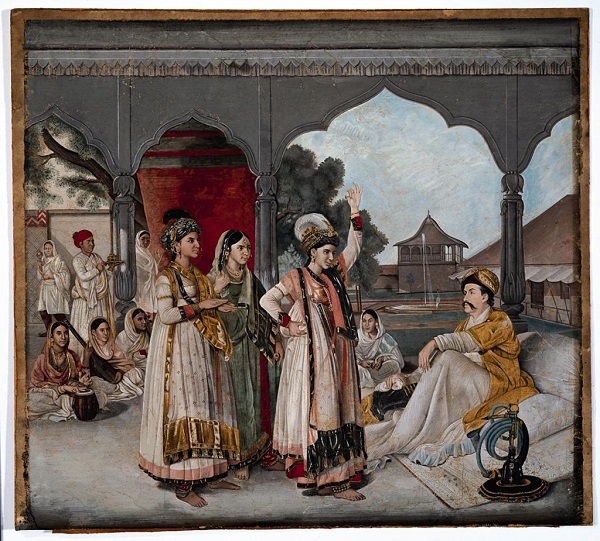
New Delhi, A unique Indo-French exhibition, which draws from the archives of the Bibliotheque Nationale in Paris and the National Museum in New Delhi, will open a historical window into the lives of 12 Indian rulers and French-speaking officers serving under them from 1750-1850.
A collaborative exhibition, “Rajas, Nawabs and Firangees, Treasures from the French and the Indian archives (1750-1850)” will showcase never-before-seen manuscripts, paintings and artefacts that offer glimpses of the Indian court life through the eyes of French-speaking officers — few of whom acquired high military positions and were endowed with ‘jagirs’.
While many of the erstwhile officers lived and died anonymously with few records except for accounts of battles and ship logs, most of the fortunate ones, such as Jean-Baptiste Gentil or Antoine Polier, brought back invaluable collections of Indian manuscripts — some of which find space in the exhibition, which is curated by Samuel Berthet.
The exhibits are contextualised within the rise of British East India Company over the subcontinent, and the successive defeats of the army of the French East India Company at its hands.
In the first section, on display are portraits of 12 duos of French officers, and the Indian rulers in whose court they served, covering most of the Indian territory, from present Kerala to Punjab through Bengal, Awadh, Delhi, Rajasthan, Poona, Hyderabad and Madurai.
Many prominent Indian rulers and French speaking officers commissioned paintings of themselves, which are part of a larger flow of pictures in the Indian court and Europe, and of a complex interplay of multiple mirrors where the technique and the style of representation translate the attributes of power and affluence in different ways.
The second part shows a selection of the wide collection of Indian sacred texts preserved in the Bibliotheque Nationale, the French National Library. Apart from various aspects of Hinduism, the collection also holds manuscripts related to Islam, Buddhism, Tantrism, Jainism and also the ancient religion of the Parsis.
The exhibition’s third leg is an opening looking at a rich and complex theme of Firangee paintings in the light of the French experience, and answers how foreigners projected themselves during their sojourn in the East, and how they were represented by indigenous miniature artists.
On view are the early dual representations of French speaking travellers such as Francois Malherbe, Manucci, Bernier or Tavernier.
The show also displays European themes in Indian court paintings since western images circulated in the Indian court and painters took inspiration from them to adapt them in their own way; and books on Indian culture (botany, history and numismatic) commissioned by French persona, and painted by Indian artists for a French readership.
In short, those are books on India in French illustrated by Indian artists.
Also on display are Indian paintings representing Indian divinities and communities commissioned by French administrators to painters of the Tanjore tradition.
Presented by Alliance Francaise de Delhi, the United Service Institution of India and the National Museum, “Rajas, Nawabs and Firangees” would run from November 15 to December 7 at the National Museum here.
French Ambassador Emmanuel Lenain said, “This exhibition brings a new perspective to Indo-French ties as it highlights hitherto unseen archives and documents on Indo-French encounters in the 18th and 19th centuries. The exhibition also shows that the roots of the strategic partnership between our two countries can be traced back to this rich past and that, just like today, strategic relations in earlier days were also cultural relations.”









